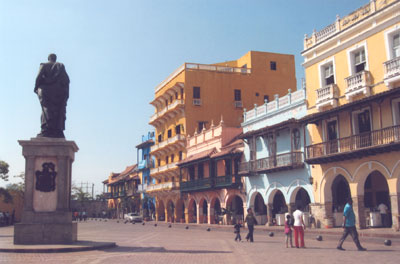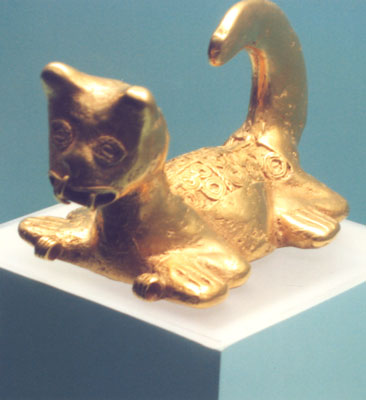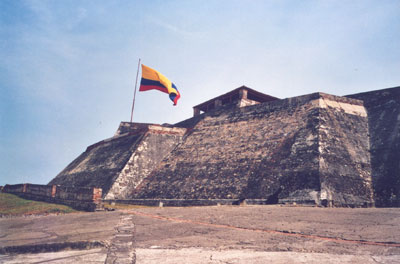Cartagena: Colombia’s colonial gem
This item appears on page 67 of the December 2009 issue.
by Julie Skurdenis
This is a story about Cartagena’s Old Town, perhaps the most beautiful colonial-era city in South America. It’s located in northern Colombia on the Caribbean. Not surprisingly, it’s a UNESCO World Heritage Site.
This is also a story that could be told in one word: walk. Or perhaps in a few words: walk, walk and then walk some more. Cartagena, whose full name is Cartagena de Indias, is without doubt a city that should be experienced on foot, not just its main sights but its streets and squares as well, because these as much as the main sights give the visitor a feel for this city’s long and rich past.
Cartagena’s founding
That past began in 1533 when Cartagena was founded by Pedro de Heredia. The town grew to become one of Spanish America’s most important ports. Plunder from the rest of South America flowed through Cartagena on its way to the mother country. Pirates, particularly the English, plundered the plunderers.
One of the most successful of the lot was Sir Francis Drake, who sacked Cartagena in 1586, sending the loot back to Elizabeth I’s treasury. In response, defensive walls were built, enclosing Cartagena’s Old Town, along with a series of stout fortresses beyond.
Much remains: palaces, mansions, churches, monasteries, walls…. The area to begin your walking is the streets of the inner part of the Old Town in the districts called El Centro and San Diego. Just walking these streets is a joy, especially early in the day when they are less crowded or early in the evening when the lights come on.
The streets of Old Town lead to Cartagena’s many squares, each different, each with its own personality. There are six main plazas: Coches, Aduana, San Pedro Claver, Bolivar, Santo Domingo and San Diego. Coches is hustle and bustle; Santo Domingo is for café-sitting and people-watching; Bolivar is for museums. A plaza for every taste!
Churches and monasteries
Some of Cartagena’s most famous and oldest churches are located on these plazas: the Cathedral which was partially destroyed by Drake; Santo Domingo, the oldest church in the city, built at the end of the 16th century, and the church of San Pedro Claver and its adjacent convent, named in honor of the saint who dedicated himself to the spiritual and material needs of the many slaves brought to Cartagena from Africa.
There are also two beautiful old convents that have been transformed into deluxe hotels: Hotel Santa Clara, built in 1621, and Hotel Charleston, built around two courtyards. My husband, Paul, and daughter, Katie, and I didn’t stay at the Santa Clara, but we did dine in its leafy, arcaded central courtyard three times in nine days. Plus one lunch at the Charleston.
Best museums
On Plaza Bolivar are located two of Cartagena’s best museums: the infamous Palace of the Inquisition and the resplendent Gold Museum.
Heretics were denounced and tried at the misnamed Palace of the Inquisition, palatial in its architecture if not in its function. If convicted, they were then burned at the stake in a public execution. The museum now displays numerous instruments of torture as well as colonial artifacts.
The Gold Museum houses gold objects fashioned by the Zenú Indians, who lived there before the arrival of the Spanish. The objects — ornaments, jewelry and figurines — are intricate and exquisite and are one reason the Spaniards came to the New World in the first place: to relieve the Indians of their gold.
Another historic building beautifully adapted to a new use is the Royal Customs House near the Church of San Pedro Claver. It’s now an imaginatively designed Museum of Modern Art with a small collection of Colombia’s foremost contemporary artists.
A 15-minute walk away, in Plaza Santo Domingo, is a huge bronze statue of a reclining female nude by Colombia’s renowned Fernando Botero. It’s called “La Gorda” (“The Fat One”) and is a perfect backdrop for diners gorging themselves in one of the many restaurants filling the plaza.
Walls and fortresses
In your meandering around Cartagena, you can’t help noticing the sturdy walls hugging the Old Town. Begun at the end of the 16th century after Drake’s attack, they were not completed until more than 200 years later.
In the northern part of the Old Town is a unique series of thick walled vaults called Las Bóvedas, built at the end of the 18th century. Once used as dungeons and storerooms, they now house a bevy of overstuffed souvenir shops.
Not located in the Old Town but a “do not miss” nonetheless are the 17th-century San Felipe de Barajas Fortress, one of the strongest ever built by the Spaniards in the New World, with an extensive system of tunnels, and the 400-year-old convent called “La Popa,” which had one of the most photogenic flower-and plant-filled patios I’ve ever seen.
If ever there was a walking city, surely it’s Cartagena. Just remember to pack a sturdy pair of walking shoes to deal with the cobblestones.
If you go. . .
On our visit to Cartagena in January ’09, we spent nine nights in a colonial house that we rented in the Old Town and which we found listed online. There are many such houses listed. The more luxurious ones with many bedrooms, interior courtyards and swimming pools are expensive: $600 per night and up, depending on the season.
If you prefer a hotel, Sofitel Santa Clara (www.hotelsantaclara.com) on Plaza San Diego and the Charleston (www.hotelcharlestonsantateresa.com) on Plaza Santa Teresa are the best in the Old Town. Rates begin at $230 per night at the Santa Clara and at $170 at the Charleston, not including tax.
We took a look at the rooms at the Tres Banderas (www.hotel3banderas.com), at Calle Cochera del Hobo No. 38-66. They’re small, but its courtyards are peaceful and the room rates inexpensive, beginning at about $54 without tax.
Cartagena’s Old Town is loaded with good restaurants. For each of the following, which were some of our favorites, the price shown was for three people and included a complete dinner, drinks and tip: El Refectorio ($139) and El Claustro ($78), both at the Santa Clara, Da Danni ($92), La Vitrola ($84) and Café del Santisimo ($91). Vitrola and Santisimo both have Cuban bands.
Many restaurants in the Old Town offer al fresco dining in courtyards or outside.
We flew COPA (800-FLY-COPA, www.copaair.com) from New York to Cartagena via Panama City. Total flying time was about six hours.



